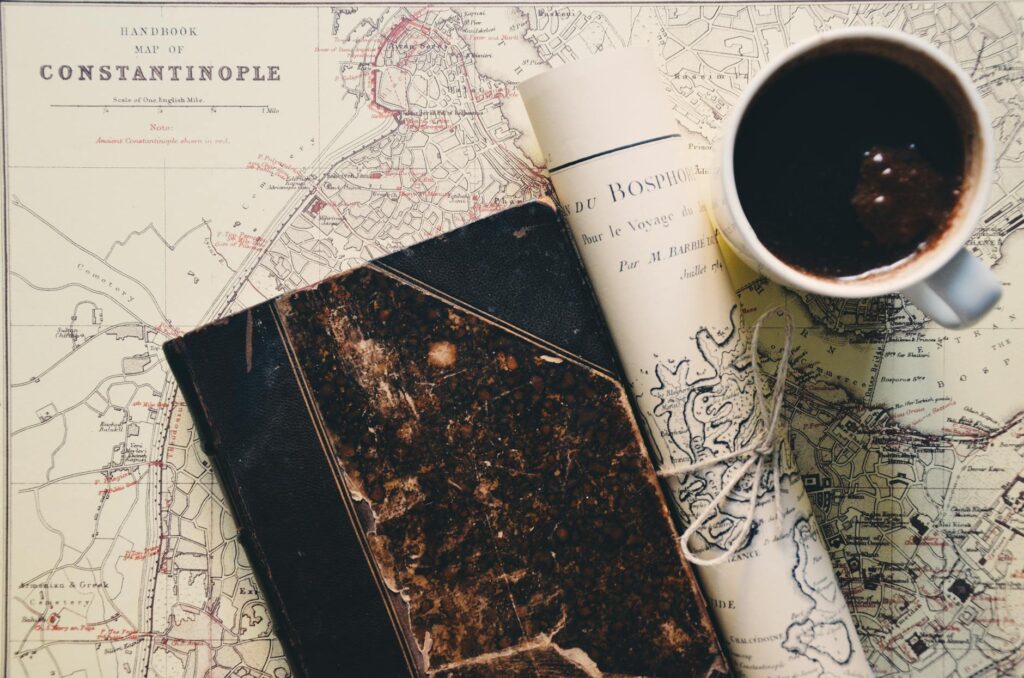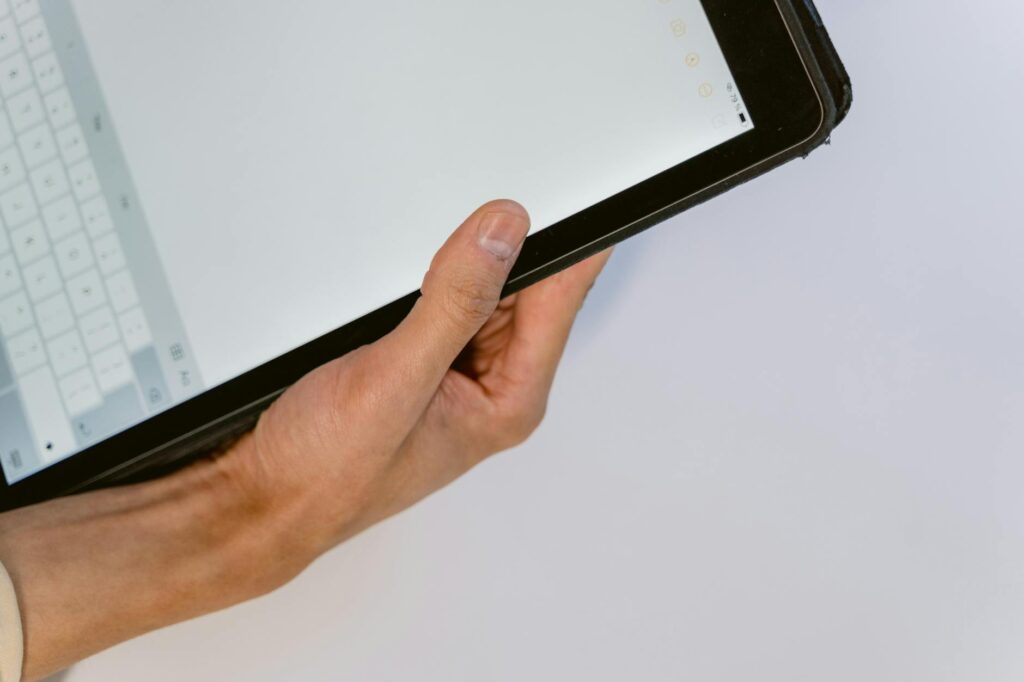How to Use Your Commute to Plan a Relaxing Getaway
The morning alarm blares. You roll out of bed, go through the motions, and then it begins: the daily commute. Whether you’re crammed into a train, stuck in traffic, or waiting for a bus, this daily grind can feel like the biggest waste of time. It’s dead time. It’s frustrating. But what if I told you that this chunk of your day—the part you probably dread the most—could be the secret ingredient to your next great escape? Seriously. You can use this time to plan a relaxing getaway from start to finish, transforming that soul-crushing travel time into a portal to your next adventure. It’s about reclaiming your time and making it work for you, not against you.
Key Takeaways
- Transform your daily commute into productive, bite-sized vacation planning sessions.
- Break down the planning process into three manageable phases: Dreaming, Logistics, and Itinerary.
- Utilize specific apps and tools optimized for on-the-go planning, even with spotty internet.
- Adapt your strategy based on your mode of transport, whether you’re a passenger or a driver.
Why Your Commute is the Secret Weapon for Vacation Planning
Think about it. When else do you have a guaranteed, uninterrupted block of time every single day? At home, there are chores, family, and the siren song of Netflix. At work, well, you’re supposed to be working. The commute, however, is a unique bubble. It’s forced downtime. Most people fill it by scrolling aimlessly through social media or staring blankly out the window. But that 30, 60, or even 90 minutes each way is a goldmine of potential.
Planning a trip can feel overwhelming. It’s a huge task that we often put off because we think we need to block out an entire weekend to tackle it. The beauty of commute-planning is that it breaks this massive project into tiny, manageable chunks. A 45-minute train ride is the perfect amount of time to research flights to Lisbon. A 20-minute bus journey is ideal for finding the top three tapas bars in Barcelona. Instead of a mountain, trip planning becomes a series of small, satisfying hills you can conquer one commute at a time. This approach not only makes the process less daunting but also builds excitement and anticipation, making the journey to your holiday almost as fun as the holiday itself.
The Commute-Friendly Planning Toolkit: What You’ll Need
To turn your commute into a planning powerhouse, you need the right tools. The goal here is efficiency and the ability to work offline or with a spotty connection. Forget clunky websites that take forever to load. We’re talking about a lean, mean, travel-planning machine that fits in your pocket.

- A Solid Note-Taking App: Something like Evernote, Google Keep, or Apple Notes is essential. You need a place to jot down ideas, flight numbers, hotel names, and confirmation codes. The key is to choose one that syncs across your devices and, crucially, has a robust offline mode.
- Offline Maps: Before you even start, download an offline map of your potential destination(s) using Google Maps or an app like Maps.me. This is a game-changer for researching neighborhoods and pinning potential hotels or attractions without needing a Wi-Fi signal.
- Travel Research Apps: Pinterest and Instagram are fantastic for visual discovery. Create a board or collection for your trip and save inspiring photos of landscapes, food, and activities. For more detailed guides, apps like Culture Trip or downloading articles from blogs like Atlas Obscura for offline reading can be invaluable.
- Flight and Hotel Aggregators: Apps like Skyscanner, Hopper, and Google Flights are your best friends for finding deals. Hopper is particularly great for commute planning because it lets you ‘watch’ a trip and will notify you when prices drop. For hotels, Booking.com and Hostelworld have user-friendly apps that make browsing and saving options a breeze.
- Spreadsheet App: Google Sheets or Microsoft Excel on your phone is perfect for a simple budget tracker. Create a basic sheet with categories like ‘Flights’, ‘Accommodation’, ‘Food’, ‘Activities’, and ‘Contingency’ to keep your spending in check from the very beginning.
Your Step-by-Step Commute Planning Strategy
Okay, you’ve got your tools. Now, let’s break down the actual process. We’ll divide this into three phases, each taking a few days’ worth of commutes. This isn’t a race; it’s a marathon of micro-sessions.
Phase 1: The Dream and Discover Commute (Days 1-3)
This is the fun part! The goal here is pure, unadulterated brainstorming. Don’t worry about budgets or logistics yet. Just let your mind wander.
Commute 1: Ask the Big Questions. On your way to work, open your note-taking app and start a new note titled “Getaway Ideas.” Ask yourself: What kind of trip am I craving? A sun-drenched beach? A bustling city with amazing food? A quiet mountain retreat? How long do I want to go for? A long weekend? A full week? Who am I going with? Solo? Partner? Family? Just write down whatever comes to mind.
Commute 2: Visual Inspiration. Today’s commute is all about visuals. Fire up Pinterest and search for terms like “unique European cities,” “best beaches in Southeast Asia,” or “cozy cabin getaways.” Create a new board and start pinning anything that catches your eye. Don’t overthink it. This is about capturing a vibe. The algorithm will start to learn what you like and feed you even more tailored inspiration.
Commute 3: The Initial Deep Dive. Look at your Pinterest board. Are there one or two destinations that are really standing out? Pick one. Now, spend your commute doing some light reading. Search for a travel blog post titled something like “3 Days in [Your City]” or “Ultimate Guide to [Your Country].” Save a few articles to an offline reading app like Pocket to review on your way home. Your goal isn’t to create an itinerary, but just to get a feel for the place.
Phase 2: The Logistics and Locking-In Commute (Days 4-7)
Now we get down to the nitty-gritty. It’s time to see if your dream destination is feasible in terms of time and money. This is where you can truly plan a relaxing getaway by handling the stressful parts in small, manageable doses.
Commute 4: The Flight Hunt. Open Skyscanner or Google Flights. Plug in your home airport and your dream destination. Use the ‘flexible dates’ or ‘whole month’ feature to see when it’s cheapest to fly. Don’t book anything yet! Just take note of the airlines, typical flight times, and average costs. Set up a price alert on Hopper for your preferred dates.
Commute 5: The Accommodation Search. Based on your research from Phase 1, you should have an idea of which neighborhoods look interesting. Use your offline map to orient yourself. Then, hop on Booking.com or Airbnb. Filter by your budget and desired amenities. ‘Favorite’ or ‘Save’ at least 3-5 promising options. Read a few recent reviews for each one. Having options prevents that last-minute panic.
Commute 6: The Budget Blueprint. Open your spreadsheet app. Create your budget. You have a rough idea of flight and accommodation costs now. Do a quick search for “how much does a trip to [Your Destination] cost” to get a ballpark for daily expenses like food and transport. Plug in some numbers. Does it look realistic? If not, you can either adjust your trip length, look at a cheaper destination from your initial list, or decide to save up for a bit longer. This is a crucial, stress-reducing step.

Phase 3: The Itinerary and Immersion Commute (Days 8-10)
With the major bookings out of the way, this phase is about filling in the details that will make your trip truly special. This is where you go from a tourist to a traveler.
Commute 7: Must-Do’s and Maybes. Go back to your saved blog posts and travel guides. In your notes app, create two lists: “Must-Do” and “Maybe-Do.” Your ‘Must-Do’ list should be short—the 2-3 things you’d be heartbroken to miss. Everything else goes on the ‘Maybe’ list. This prevents over-scheduling and allows for spontaneity.
Pro Tip: Instead of planning every single minute, try theme days. For example, a ‘Museum & History Day’, a ‘Food Tour & Market Day’, and a ‘Relax & Wander Day’. This provides structure without being rigid.
Commute 8: The Food Quest. This might be the most important commute of all. Use apps like Culture Trip, or blogs from trusted sources like Eater or a local food blogger, to find highly-rated restaurants, cafes, and street food stalls. Pin them on your offline Google Map. Color-code them if you want to get really organized (e.g., green for cafes, red for dinner spots).
Commute 9 & 10: Practicalities and Pre-Immersion. Use these last few commutes to tie up loose ends. Research public transport—how do you get from the airport to your hotel? What kind of metro pass should you buy? Download a language app like Duolingo for a 15-minute lesson on basic phrases. Or, create a Spotify playlist of music from local artists to get you in the mood. It’s these little touches that build incredible anticipation.
Tips for Different Commute Types
Not all commutes are created equal. Here’s how to adapt your planning strategy to your specific situation.
For the Train or Bus Rider: The Visual Planner
You have the luxury of using your hands and eyes. This is the ideal scenario. You can easily switch between apps, type notes, and browse visually-rich websites. Your biggest challenges are spotty internet and sudden stops. That’s why having offline-first apps is so critical. A portable battery pack is also your best friend to ensure you don’t run out of juice mid-booking.
For the Driver or Carpooler: The Audio Strategist
Obviously, you can’t be staring at your phone. But your commute can still be incredibly productive. This is where audio comes in. Your commute becomes a time for research and inspiration gathering through your ears.
- Travel Podcasts: There are fantastic podcasts for every travel style. Shows like “The Travel Diaries” or “Amateur Traveler” are great for destination discovery. Use your drive to listen to an episode about a country you’re interested in.
- Voice Notes: When an idea strikes, don’t let it vanish. Use your phone’s hands-free voice assistant to create a voice memo. You can say, “Hey Siri, take a note: research boutique hotels in Porto’s Ribeira district.” When you get home, you’ll have a list of actionable ideas to explore.
- Audiobooks & Language Lessons: Download an audiobook set in your destination to immerse yourself in the culture. Or use an audio-based language learning program like Pimsleur to practice key phrases. You’ll arrive feeling much more prepared.
Putting It All Together: From Commute Daydreams to Departure Day
Over the course of about two weeks of commutes, you’ve done it. You’ve gone from a vague desire for a holiday to a fully-fledged, well-researched, and booked trip. The final step is to consolidate everything. Spend one last commute organizing your main note. Put flight details, hotel addresses, and confirmation numbers right at the top for easy access. Share the note with any travel companions. You’ve turned dozens of fragmented, boring journeys into one exciting, seamless plan. The best part? The overwhelming feeling of ‘I need to plan a vacation’ is gone, replaced by the quiet, confident hum of ‘I can’t wait for my vacation’.

Conclusion
Your daily commute doesn’t have to be a void in your day. It can be the fertile ground where your travel dreams take root and grow into reality. By breaking down the process into small, commute-sized actions, you remove the intimidation factor and make travel planning a joyful and consistent part of your daily routine. So tomorrow morning, when you’re waiting for that train or sitting in that traffic jam, don’t just see it as the journey to work. See it as the first step on your journey to somewhere amazing. Happy planning!
FAQ
What if my commute is very short, like 15 minutes?
Even a 15-minute commute is useful! Use a ‘one task per commute’ approach. One commute could be just for brainstorming a list of 5 possible destinations. The next could be a quick flight price check for one of them. The next could be saving 3 hotels. Small, focused bursts of activity add up surprisingly quickly over a week or two.
Is it safe to book flights or hotels on public Wi-Fi?
It’s generally not recommended to enter sensitive information like credit card details over unsecured public Wi-Fi. Do your research and browsing on the commute, and save the final booking step for when you’re on a secure, trusted network, like your home Wi-Fi. Most booking apps will let you save your final choices, so you can just open the app at home and complete the purchase in two minutes.



 Kneading Dough Therapy: A Baker’s Travel Guide
Kneading Dough Therapy: A Baker’s Travel Guide  Rediscovering Your City: A Tourist’s Guide to Home
Rediscovering Your City: A Tourist’s Guide to Home  The Digital Postcard: A Guide to Mindful Photo Sharing
The Digital Postcard: A Guide to Mindful Photo Sharing  Discover Serenity: 7 Peaceful Architectural Styles
Discover Serenity: 7 Peaceful Architectural Styles  Beat Museum Burnout: Enjoy Your Visit Without Exhaustion
Beat Museum Burnout: Enjoy Your Visit Without Exhaustion  A Guide to the World’s Most Beautiful Fountains
A Guide to the World’s Most Beautiful Fountains  Social Media on Blockchain: The Next Digital Frontier
Social Media on Blockchain: The Next Digital Frontier  What is a Flash Loan? A DeFi Deep Dive for Beginners
What is a Flash Loan? A DeFi Deep Dive for Beginners  Crypto Swing vs Day Trading: Which Style Wins?
Crypto Swing vs Day Trading: Which Style Wins?  A Guide to NFT Generative Art Platforms (2024)
A Guide to NFT Generative Art Platforms (2024)  Crypto’s Carbon Footprint: The Real, Nuanced Story
Crypto’s Carbon Footprint: The Real, Nuanced Story  Join a Web3 Community: The Ultimate Networking Guide
Join a Web3 Community: The Ultimate Networking Guide